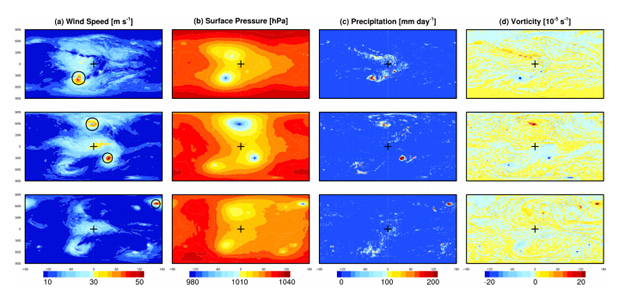There's a tidally locked planet with native life or not, but with an atmosphere that could allow a decent degree of heat transfer between hot and cold side and a rather broad, hospitable region near the terminator.
Even without rotation, we could expect vortices around the poles - looking at the dayside: Cool air streams, near to the ground, from the night side towards the sunpole, to be heated, rise, and stream back above the incoming cool air. If cool flow is disturbed in any way (say a mountain range roughly along the terminator), this would could introduce a small angular momentum to the incoming cool air which would be greatly accelerated as we get closer to the pole. This alone could in theory lead to a strong polar vortex.
ETA: Coriolis forces are not necessary to create a vortex, as can be observed when emptying a bathtub. A short explanation is found here, indicating that the effect of the coriolis force is rather weak, as shown by an experiment where all other disturbances where eleminated and it took 15 minutes for a vortex to develop due to coriolis effects.
Now my question is: Would such a circumpolar vortex trap hot (or cold) atmosphere, the way the polar vortices on earth do? Or would it rather be part of a sort of atmospheric conveyor belt, transporting hot and cold air masses around the globe?
For the purpose of this questions, I'm only interested in atmospheric vortices, I think asking about marine phenomena would complicate things too much. The worldbuilding aspect is that a tidally locked planet could have those vortices and relatively benign conditions near the terminator - but the vortices break down every few years or decades, sending masses of scorching or freezing air to the terminator. The inhabitants would study chaos theory with religious devotion.
Note: A previous version of this question considered a rotation around the sunpole-nightpole axis to aid in vortex formation, as a learned discussion in the comment section here and under this (wrong) answer make clear this is impossible.




